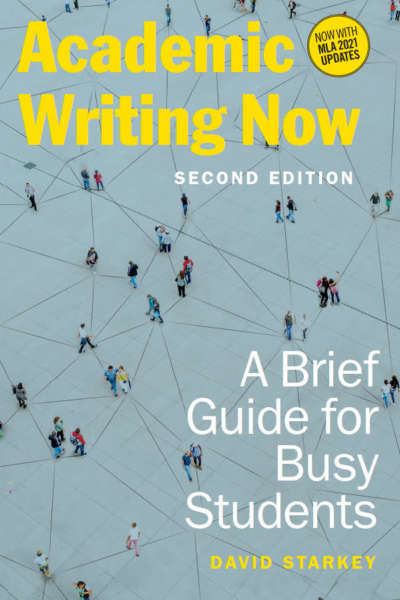The Broadview Pocket Guide to Writing: A Concise Handbook for Students presents essential material from the full Broadview Guide to Writing. Included are summaries of key grammatical points; a glossary of usage; advice on various forms of academic writing; coverage of punctuation and writing mechanics; helpful advice on how to research academic papers; and much more. Four commonly-used styles of citation and documentation are covered—MLA, APA, Chicago, and CSE.
This edition is intended primarily for American readers. Please see this page for our Canadian edition.
Comments
Comments on the full Broadview Guide to Writing:
“Even the most useful reference guides are not always, well, shall we say, riveting. A refreshing exception is the new Broadview Guide to Writing, which is smart, helpful, and even fun to read.” —Gerald Graff and Cathy Birkenstein, authors of They Say / I Say: The Moves That Matter in Academic Writing
“The chapter on ‘How to Be Good with Words’ braves every thorny patch of ethical usage imaginable with clear-eyed candor, a serious and generous sensibility, and refreshing wit…. [Overall,] The Broadview Guide to Writing is not only informative and impressive; it is smart—smartly written and smartly designed.” —Dennis Paoli, Co-coordinator, Writing Across the Curriculum, Hunter College, CUNY
“The Broadview Guide remains the most readable writing guide available—at any price. It’s the only usage guide I’ve ever actually read for fun. Moreover, it’s sensible, and it’s complete. The authors assume nothing, but they don’t condescend. … The 6th edition gives more space to the problems of gender, race, and class-biased language; most guides don’t direct enough of our attention here. The new chapter on visual literacy is also good—an interesting group of paintings & photographs along with a set of clear, concrete ways to ‘read’ them.” — Jacky Bolding, University of the Fraser Valley
“… an excellent choice.… The expanded coverage of the sixth edition [makes] this not only a comprehensive writing guide, but also a valuable introduction to communication and critical thinking in today’s academic world. I will be recommending this text to students at all levels.” — Maria DiCenzo, Wilfrid Laurier University
“[The] reference sections on grammar and usage … cover everything I would ever point out in student writing.… The section on MLA style covers pretty much everything anyone needs to know about how to deploy this system of documentation.… The sections on academic writing are [also] very good.” — Bruce Greenfield, Dalhousie University
“In a market replete with writing guides, this practical book stands out…. The [Broadview] Guide … re-energizes this pedagogical field by providing clear and concise explanations supported by examples.” — Anne Quéma, Acadia University
“[The new] section on how language both reflects and shapes reality … is thought-provoking and sensitive.… Overall, the book is comprehensive, balanced, and engaging. I enjoyed reading it, and I rarely say that about handbooks and guides to writing. I’m sure students will find this book helpful and inspiring.” — Candace Fertile, Camosun College







